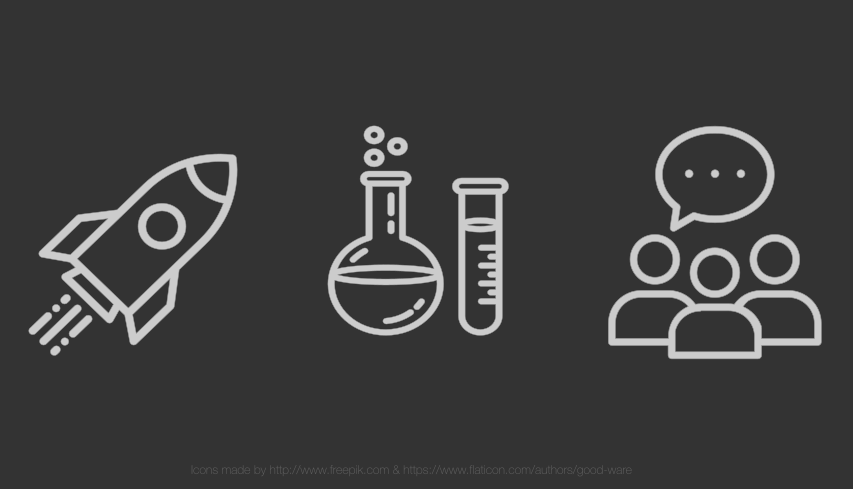I think that product ownership is one of the toughest, but at the same time best jobs I could ever think of. The thing is that a lot of product owners tend to be drawn to, or pulled in, the operational activities instead of proper product development.
The true value and essence of product ownership does not lie in ordening stories on backlogs and having a really hard time to organise a bi-weekly review meeting with the stakeholders. The essence of product ownership is about only four things:
– exploring,
– experimenting,
– evaluating,
– selling.


Explore:
As a product owner you fantasize about the desired state of things instead of how things are now and what the limitations of your environment are. Wouldn’t it be cool if…? What would be happen after…? Given the current developments we should be able to… What is the pricing model of this new startup? You make sure that you have a clear view on the current developments in technique, business and your competitors.
Some of these things you can do behind your desk. For the most important explorations however, you need to get up and talk to end users, stakeholders and teams. Pick their brains and gather their wishes.
From all this exploring you should be able to extract the goals you want to achieve with your product or service. Goals that are also properly aligned with your business strategy.
Some tools: Business strategy, Impact mapping, business model canvas/lean canvas.

Sell:
Now you need to sell these ideas and goals and you will have to sell them in multiple directions. If you have the opportunity, and you should make sure you have, you sell, and thus validate, your ideas to real end users. You will have to sell them to stakeholders, since they mostly fund your experiments and last but not least to your team(s).
When you have gathered the first feedback from end users and stakeholders, you have to make sure that your teams will follow your vision. If you are able to convince or show your teams that this is a crucial puzzle that needs to be solved, they’ll show their true potential. Goal driven development teams tend to be highly creative problem solving and so much fun to work with.
If you can provide them with proper goals they do not want you to write user stories but want to have meaningful discussions on how the solution should be and what else could contribute to the vision.

Experiment:
So now that you and your teams are on the same page you all have to find a way to reach the goals. An experiment should have at least an assumption and a way to validate.
You create small testable and measurable pieces of functionality that people can use. Finally you and your team can start gathering real feedback. These small features must all align to the business strategy and goals.
An example experiment for a hotel booking site could be:
The hypothesis: By showing the discounted rooms first on the homepage in the list view, there will be an increase in booked rooms. We think people are sensitive for discounts.
The current situation: The current number of discounted rooms booked is 100 per week.
The objective: There will be an increase in bookings for discounted rooms of 250 per week.
Duration: 2 months Success: We are successful if we have a increase of average 250 per month
Some tools: paper prototyping, UX designs, a/b testing, red/green deploys, feature toggles.

Sell:
What do you have to do to make sure people are using your new features? Do they already know where to find it? Personally I like to team up with marketing for this. This is their domain and they can be your best ally in this phase. Marketers usually have the proper channels and reach to create the biggest impact. Also, do a roadshow in which you can show these new features and pitch your upcoming ideas while you’re at it. Organise webinars, write blogs. Anything to make sure you do everything to reach the goals.
Some tools: demos, notifications & banners, email campaigns, social media, flyers, webinars.

Evaluate:
This is where things get really exiting. This is where you learn that there are no mistakes. Just happy accidents. There are only small experiments and quick feedback. Based on the data we can be truly honest and find out which way to go. Maybe the initial idea was brilliant but maybe it just didn’t make sense for the end user. Maybe the goals you have are not valid anymore. It doesn’t really matter. Just be glad that you know and have data to act upon.
Some tools: business goal validation, AI analytics, BI modeling, heath mapping, revenue, usage data.
So as a product owner I don’t want to worry about the operations too much. With the model displayed I apply more focus on the items that really matter from a product point of view. Everything else, whether Scrum, CI/CD or the newest technologies, are really valuable but also just means to an end for me.
